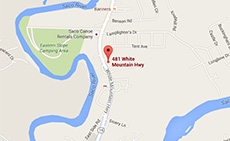Cybersecurity and You
We hear of a new threat, scam or hack every day. As overwhelming as this subject is, there are things that you can do that will reduce the risk of your personal and financial information from being compromised.
The IRS, which has issued many communications in this area, has released these security awareness tips:
- Protect your wireless network. Set strong password and encryption protections for your wireless network. If your home or business Wi-Fi is unsecured, it allows any computer within range to access your wireless network and steal information from your computer. Do not share sensitive data when using public Wi-Fi. If a public Wi-Fi hotspot does not require a password, it probably is not secure.
- Use Security Software. Security software will help protect your computer and your data from numerous threats posed by malicious programs, also known as malware. Many computers come pre-installed with firewall and anti-virus protections. Make sure these are turned on. Set your anti-virus program for automatic updates to allow for protection against emerging anti-malware threats. Make sure you add security to all your digital devices (no matter which brand), including your laptop, tablet and mobile phone. Never download “security” software from a pop-up ad. A pervasive ploy is a pop-up ad that indicates it has detected a virus on your computer. It urges you to download a security software package. Don’t fall for it. It most likely will install some type of malware. Reputable security software companies do not advertise in this manner.
- Use encryption software to protect sensitive data. If you keep sensitive financial data such as prior-year tax returns or important records on your hard drive, consider investing in encryption software to prevent unauthorized access by hackers or identity thieves.
- Set password protections for all devices and online accounts. Whether it’s your computer, tablet or mobile phone, always set a password requirement for accessing the device. If it is lost or stolen, your device is still protected from access. You should use strong passwords with 10 or more digits that include letters, numbers and special characters. Do not use the same password for all your accounts, especially your financial accounts. Change your passwords every few months.
- Avoid Phishing Emails. Never reply to emails, texts or pop-up messages asking for your personal, tax or financial information. Do not open a PDF document or picture attached in an email from an unknown source. It may contain malware. A favorite tactic of cybercriminals is to pose as businesses, credit card companies, or even the IRS and ask to update your account or divulge your Social Security number. Reputable companies never ask for sensitive data over unsecured channels. Additionally, the IRS doesn’t initiate contact by email, text messages or social media to request personal or financial information.
- Back up your Data. Periodically back up all the data on your computer via your protected cloud storage or a separate disk. If your data gets stolen or you suffer a disk failure, recovery is easy if you have routinely backed up your information.
- Protect your children. If children use any internet enabled device, make sure to have parental control options to protect them from malicious websites. Educate your children about the threats of opening suspicious web pages, emails or documents.
To learn more about this topic: https://www.irs.gov/individuals/taxes-security-together
It is also advisable to seek out a computer professional to assess your computer/device security needs in order to help implement any necessary changes.
The internet has made our lives easier but, unfortunately, it has also made it easier for unscrupulous people to steal others identities. Just like any other crime, there are no ways to protect yourself wholly, but vigilance is the best way to lessen the chances of having a fraudulent attack happen to you.
Patricia is the IT and Office Manager at Gamwell, Caputo, Kelsch & Co., PLLC in Conway, NH and can be reached at 603-447-3356. Patricia welcomes any article feedback or questions for future article consideration.


